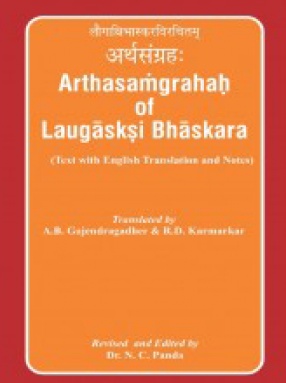
N C Panda

Showing all 24 books

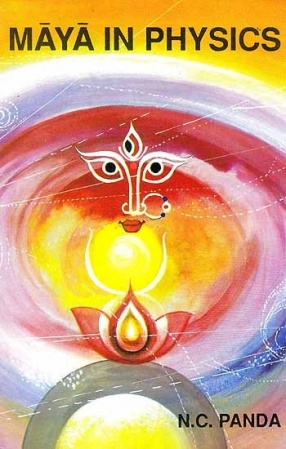
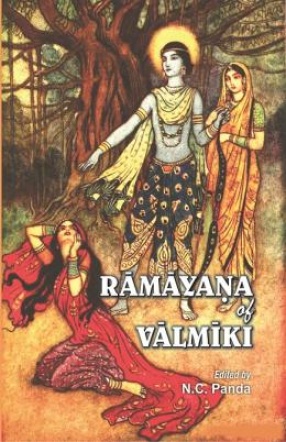
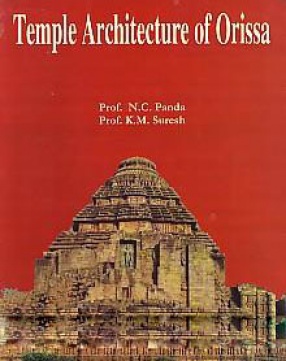
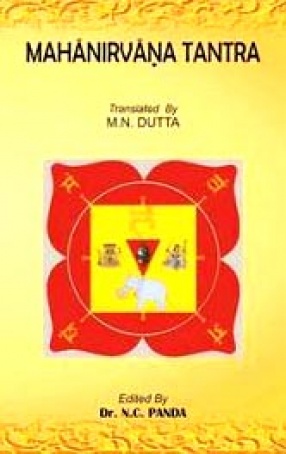
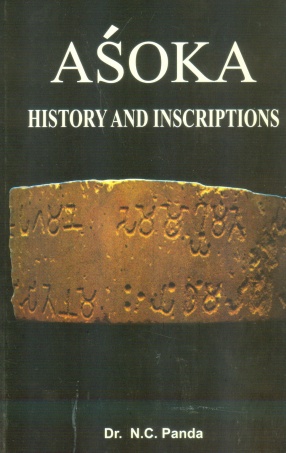
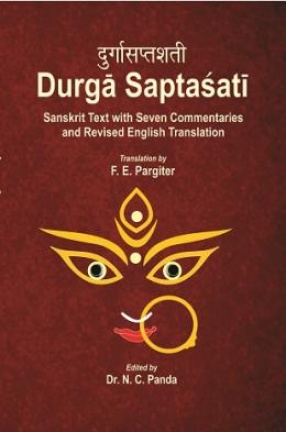



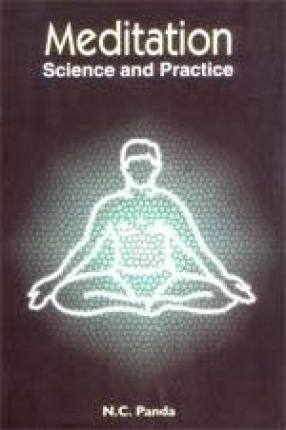
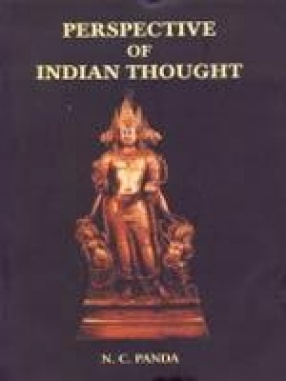

The Artha Samgrahah is an elementary treatise on Mimamsa Darsana, written Laugaksi Bharskara. This text simplifies the subject matter of Mimamsa and presents it in aclear way for the followers of Mimamsa-Sastra. According to Dr. Umesh Mishra : "It is an elementary book which is very useful for the beginners. Due to its easy and simple style the book has become so very popular amongest the Sanskritists". The book Artha Sangraha is divided into Six ...

Maya in Physics is a synthesis of modern physics and the Advaita Vedanta, with an integral thesis emerging out of the confluence. In the exposition of the Advaita Vedanta, its philosophy has been reinterpreted in the light of modern science. In this process, the Vedanta has been demystified and physics dematerialized. Instead of being confined to inter-school parallelism only, this book tries to present a total vision of the entire cosmos and its dependence on ...


The Ramayana is a great epic of the mankind. It is also known as Adi-kavya (first epic), written by the Adi-kavi (first poet) Valmiki. This famous Indian epic deals with social, moral, political, spiritual and philosophical aspects of human life, besides principally narrating the story of Rama. The Ramayana is highly popular epic which has become the property of the Indian people and it is not an exaggeration if it is said that it has influenced more than any ...
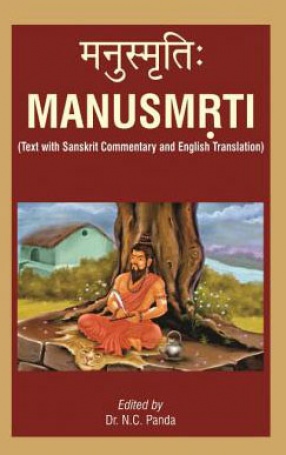
The Manusmriti is the most important and earliest metrical work of Dharmasastra textual tradition of Hinduism. It is a standard work on Hindu law. Indian tradition unanimously regards Manu as the first progenitor of the human race and also its first legislator. This Manu was believed to the founder of the social and moral order of society. Tracing backwards from the Smritis to the Vedas we found the consciousness of Manu’s being the first law giver present ...
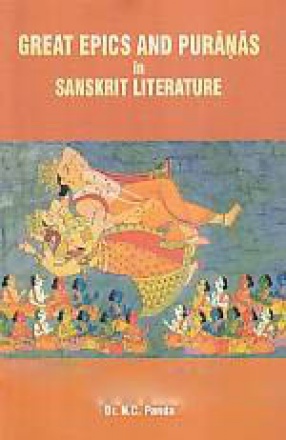

The Orissan temple architecture ranging from seventh century to thirteenth century A.D., however corresponds to an altogether different category for their unique representations called Kalingan style of temple architecture. Though, broadly they come under the Northern or Nagara style, they have certain special features which are uniquely their own. The Orissan temples are of three types, viz. (i) Rekha Deula, (ii) Khakhara Deula, and (iii) Pidha or Bhadra Deula. ...

The Mahanirvana Tantram is the most important of all the Tantras that are to be found now. This book is a short digest of Tantrik teachings.

Asoka was a versatile genius and one of the most remarkable personalities in the History of the world. He was at the same time a great conqueror and builder, statesman and administrator, religious and social reformer and philosopher and saint. King Asoka, an adherent of the common Indian religion for about nine years after his coronation, devoted himself in the pursuit and spread of the Buddhistic duties after his conversion into Buddhism in the tenth Regnal ...
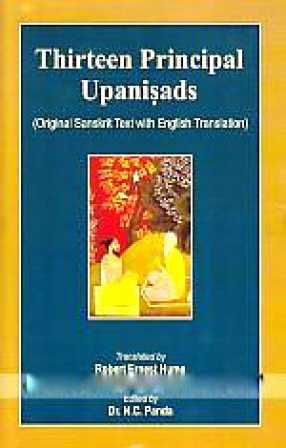


Sri Aurobindo and his philosophy is an important milestone in the Renaissance period of Indian History. Modern age witnessed the national freedom movement endowed with active participation as well as philosophical and cultural contributions made by the great yogi and versatile scholar like Sri Aurobindo. His philosophy is the meeting ground of the thoughts prevalent then in the East and the West and he evolved an integral approach to the ancient Vedic wisdom and ...
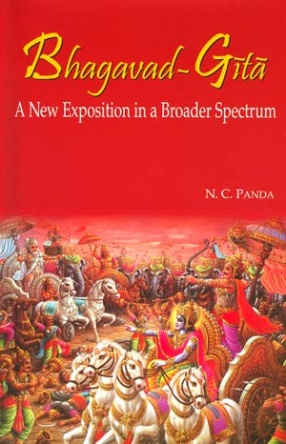
This Exposition on the Bhagavad-Gita is an exception to the traditional translation of and commentary on the scripture. It covers all the eighteen chapters of the Gita in the form of essays, with English translation of almost all verses and commentaries thereupon. In addition, the essays do contain the reflections of the author who has analyzed the topics in the light of modern thought in a broader spectrum. The Sanskrit text in Devanagari script, with Roman ...
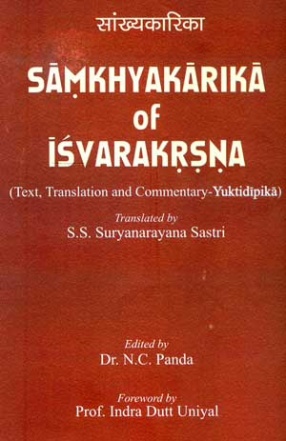
Samkhya is known as one of the oldest systems of Indian Philosophy. Isvarakrsna Samkhyakarika seems to be the earliest available and most popular work of this system.The present volume contains the original Sanskrit verses (Karikas) alongwith the Yuktidipika commentary. The authorship of this comm. is not yet known. But it is known that the Yuktidipika comm. is an oldest, authentic and clear exposition on Sankhyakarika. The speciality if this edition is that it ...

Vedanta literally means 'the end of the Vedas'. The Upanishads may be regarded as the end of the Vedas also in the sense that mark the culmination of the Vedic speculation. Besides, the Upanishads were regarded as the inner or secret meanings of the Vedas, hence their teachings were sometimes called Vedopenisad or the Mystery of the Vedas.The work entitled 'Aspects of the Vedanta' is a collection of articles, written various eminent scholars of ...

The Saundaryalahari (the Wave of Beauty) is a popular devotional hymn ascribed to the great exponent Advaita Vedanta, Sri Sankaracarya. It deals with the forms of worship of Divine Sakti. Saundaryalahari is written in praise of the Devi Tripurasundari in one hundred verses (with three more verses found in some editions) in the famous Sikharini metre. This great Tantric text rightly elaborates the various aspects of worship of the Divine Mother.The first part ...


Has the universe a beginning? Was it created? Who, then, is its creator? Or, alternately, is the universe uncreated? Is it beginningless and endless, with, of course, continual changes? Synthesizing the cumulative knowledge of science, philosophy, and religion: Eastern and Western, including Vedic/Vedantic metaphysics, Professor Panda's Cyclic Universe looks afresh at these mind boggling questions - which, ever since the dawn of human civilization, have evaded a ...

Yoga, contrary to the popular perception, is not merely a system of physical culture. It is, in fact, a uniquely Indian discipline aiming to bring about the ‘union’ of an individual spirit with the Universal Spirit: the Cosmic Consciousness - through what in Yoga is known as Samadhi, a state of profound meditation. Patanjali's Yoga - sutram, written sometime around the second century BC, is the first, systematic, at once authoritative presentation ...
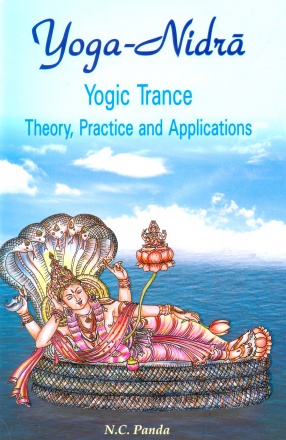
Healing of body and mind through yoga is gaining immense significance at present as a world-wide science of therapy. In this context, yoga-nidra, a self-therapy technique of yoga and tantra, is important as an effective means of regulating the mind. In this volume, Dr. Panda, a noted philosopher and psychologist, yogi and tantrist, delves into the principles and practices of yoga-nidra based on materials from the tantras and Patanjali Yoga in an attempt to ...
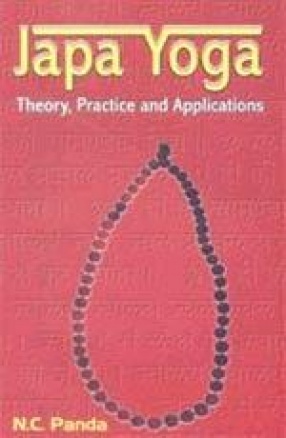
The repetition of God's name or of a mantra containing God's name, otherwise known as japa, is a religious ritual, generally meant of the emancipation of the self. The present book on jaqpa-yoga has neglected this aspect. But, it is a more comprehensive and a broad-range book. That japa is a branch of yoga, an easily attainable one and simultaneously a very effective one, has been emphasized. The theory and methodoly of japa in Patanjala yoga, in the Vedas, in ...
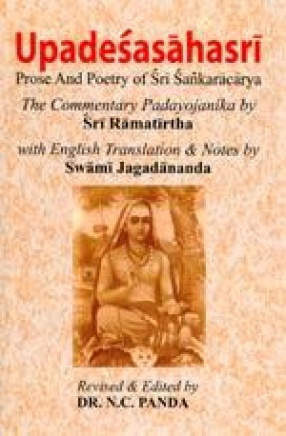
Sri Sankaracarya was a great philosopher, a prolific writer and a true devotee of God. The Upadesasahasri is a famous treatise on Advaita Vedanta and also known as the Master piece of Sri Sankara. The text is named so, because it contains thousand advices of the great Advaita philosopher, i.e., Sri Sankaracarya. The book is divided into two parts, viz., prose (gadya) and poetry (padya). The prose part has three chapters and poetry part has ...

Perspectives of Indian Thought is a collection of seventeen research articles on Indology, written by Dr. Narasingha Charan Panda. These research articles are presented before the intellectual audience on various conferences and highly appreciated because of their originality and deep clarity on the subject. The articles contained in this volume deal with an extended canvas of topics including Vedas, Epics, Puranas, Buddhism, Kashmir Saivism and some other ...
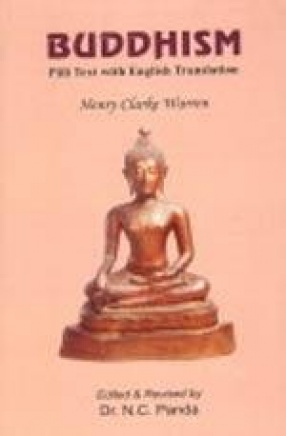
Lord Buddha's teachings have a great importance today for the common people to live in peace and to maintain brotherhood in the society. The aim of the present work is to take different ideas and conceptions found in Pali writings and present them to the reader in English. The work also contains original Pali texts along with its translations. The book is divided into five chapters and more than one hundred sections. The selections of the first chapter are on the ...
